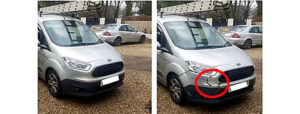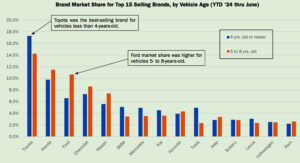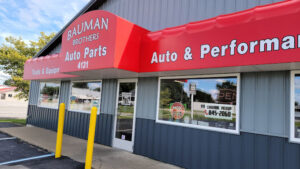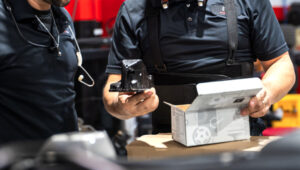When we see the true market for EV repair versus training and equipment costs and added risks, do the investments make sense to service them?
I was talking with a friend who owns a number of shops. Summarizing his comments: Why in the world would I spend all of the money to equip my shop and train the techs when there are virtually no EVs on the road, they can’t give them away, and they have a bad habit of burning to the ground?
And I like my techs — I really don’t want anybody seriously hurt or killed from electrocution. It’s also obvious this “movement” is up against a power grid that is failing weekly if not daily in some part of the country.
In an attempt to pump up their quickly diminishing market for EVs, automakers are now lumping hybrids in the EV count. Sorry, but that’s cheating. We’ve had hybrids for a number of years now and people seem reasonably happy with them. Ask Toyota who makes the Prius and Camry and all of the other OEMs. So, let’s talk pure EV.
My shop owner friend understands he may be walking past a market opportunity, but he sees no breakeven in the expense at this point. And, the elephant in the room was his retirement plan. He is in his late 50s. He wants to start slowing down then pull the plug at 65–67. So, even if the EV sales doubled there would never be enough to make any money.
Now, some math. According to a variety of sources about half of shop owners are nearing retirement. While some may have another family generation behind them, or has a key employee or competitor willing to buy them out, equipment new today will be old and likely out of date by the time it may be useful to its full potential.
According to Reuter’s Automotive, this is an issue internationally. In fact, Reuter’s notes that the costs of owning and maintaining an EV may be more expensive because there will be far fewer shops that offer repair. A little logic goes a long way. As this article is written, less than 1% of vehicles on the road are EVs (over 40% of those are in California).
And, according to manufacturers and dealers, their sales rates are falling. If the current sales rate doubled, it would maybe just eke over 1% considering those taken out of service. If there is a dearth of repair shops available already, and very few are prepared to work on EVs, as Reuter’s points out, the cost of repair for EVs will be amazingly high.
As it stands now, I suggest we are headed back to the late 1800s to early 1900s when EVs were all the rage. For all of the reasons today, they failed then, too. The only difference between now and then is that we have a government trying to tell us what we must drive. And, they are spending our taxpayer money by incentivizing buyers, builders, charger makers and states.
It has been shown in study after study that most of the population would not consider buying an EV. And many of those who have bought EVs want out. Without tax money support this would be little more than an interesting oddity just like it has been for over a century. Did you want to ask how I really feel? And don’t even get me started on over the road EV trucks.
Just out of curiosity, I did some digging into pollution as related to transportation. Depending on how the math is calculated, the internal combustion engine (ICE) vehicles on road today are 85% to 95% cleaner than they were just a couple of decades ago. And of all pollution made, they make up about 16% of U.S. carbon emissions. It’s about the same in Europe, though higher in India, China and other areas.
When you add in all forms of transportation you find that the amount of emissions is approximately 20% to 25%. Meaning all of those politicians’ jets flying into their climate crisis meetings along with all air, railroad and ship travel are all major sources.
For pretend, let’s say we cut vehicle emissions by 50%, we’ll add to carbon emissions with the natural gas, coal and other fuels needed to power manufacturing of the vehicles, batteries, power stations, the grid and more — to say nothing of the horrendous issue of the amazing amounts of pollution generated by digging the minerals needed for EV batteries.
Anyway, if we do all the math, consider about half of all shop owners are looking to retire and that the EV craze is for wealthy people who have a Suburban or Expedition back in the driveway at home. When we can see the true market for EV repair versus the training and equipment costs and added risks, does it make sense for any of us to get all excited over this?
My answer is an emphatic no. Rather, if there is money to be spent on training and equipment, spend it on the 99% of vehicles that are already out there and those out of OEM warranty. As they say in the movies, “At ease, carry on as you were.”
At a young age, industry veteran Tom Langer started detailing cars for his family’s dealerships, which then led to work in the jobber and warehouse business, along with a machine shop and auto body shop. He held a variety of positions with an auto parts manufacturer for 10 years, and remained in the industry working with shops, warehouses and manufacturers in research and more.












Comments are closed.